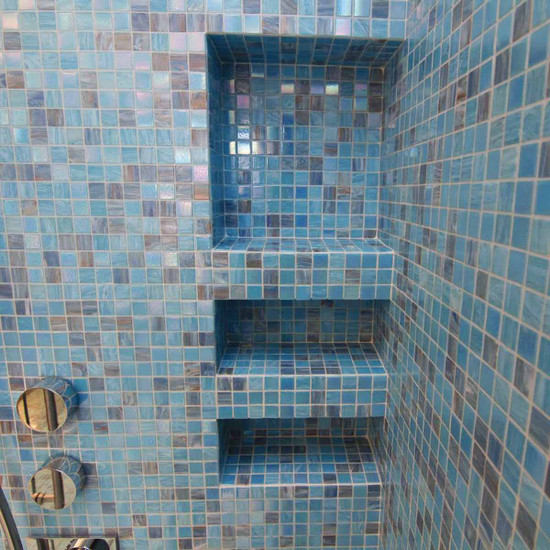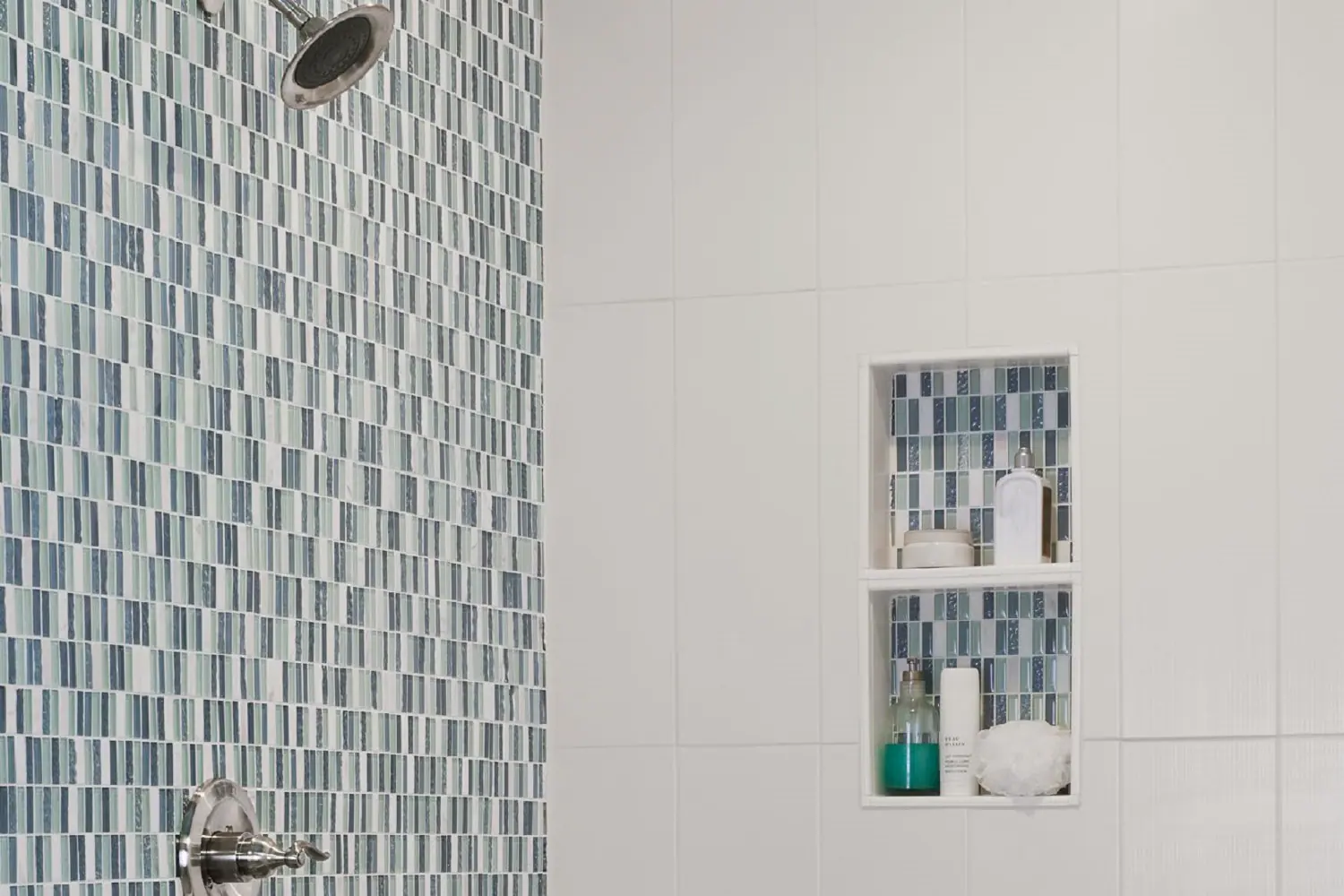On average, Americans spend over $500 billion at home improvement stores each year. Most home improvement projects aim to increase the home’s value while creating something usable and aesthetically pleasing. A new tile installation would be a good example of such a project. Having a niche in your shower wall is stylish and practical. It offers several advantages, such as convenient storage and easy access to bath essentials. It adds organization to the space that is stylish and clutter-free. A well-thought-out shower niche will enhance the aesthetic of your shower and add to an overall pleasant experience while using the shower. So keep reading to find out how to tile a shower niche.
WHY SHOULD YOU ADD A SHOWER NICHE?
A shower niche provides a designated space within the shower area to store bath products such as shampoo, conditioner, soap, and other toiletries. It eliminates the need for bulky shower caddies or hanging organizers, keeping your shower area organized and clutter-free.
With a shower niche, you can keep your toiletries within reach, making it easy to grab what you need while showering. It provides a convenient and efficient way to access your essentials without stepping out of the shower or reaching for items outside the shower area. It also keeps you from placing products on your shower floor.
A well-designed and adequately tiled shower niche will enhance the overall visual appeal of your bathroom. It adds a decorative element to the shower area, creates a focal point, and gives your bathroom an upscale and finished look. You can choose tiles that complement the rest of your shower design or create an accent with contrasting tiles.
You can find many pre made show niche kits from such brands as Schluter, Noble, or Ardex
Shower niches are constructed with waterproofing measures that help protect all the surrounding walls and prevent water damage. Also, cleaning a tiled shower niche is relatively easier than cleaning free-standing units.
PLAN SOME PREPARATION TIME
The first step in tiling a shower is ensuring it’s waterproof. Apply a waterproofing membrane or a liquid waterproofing product to the inside of the niche and the surrounding area. Follow the manufacturer’s instructions for application.
Choose tiles that complement the overall design of your shower. Selecting tiles suitable for wet areas and can withstand constant water exposure is vital. Porcelain or ceramic tiles are famous for their durability and water resistance.
Take accurate measurements of the niche to determine the size and amount of tiles needed. It is a good idea to use smaller tiles for the niche to ensure they fit correctly and allow for any slopes or angles.
You may need to cut some tiles to fit into the niche and around the edges or corners of the niche. Use a tile cutter or a wet saw to make precise cuts. Take safety precautions when using power tools, and always wear protective gear.

HOW TO TILE A SHOWER NICHE?
Start by applying thin-set mortar or adhesive to the back of the niche. Press the tiles into place, ensuring they are level and aligned with the surrounding tiles. Use tile spacers to maintain consistent spacing between the tiles. Continue tiling until the niche is fully covered.
You can use a bullnose tile with rounded edges or a metal rim to finish off the edges of the shower niche. Different products are available, and your local hardware store will be able to advise you in this regard.
After the tiles have been set, remove the tile spacers and prepare the grout according to the manufacturer’s instructions. Apply the grout to the gaps between the tiles using a grout float. Remove excess grout from the tile surface with a damp sponge and allow the grout to cure before applying a grout sealer.
Consider using a latex-based liquid additive instead of water to mix the grout. This product is designed as a water substitute when tiling or grouting wet areas such as showers.
Setting the tiles on the bottom of the niche, or shelf, with a forward angle will ensure that water runs off the niche and does not collect inside. Smaller tiles, such as mosaics or penny tiles, are easier to use and position in a small space, but full-sized tiles are also suitable; this depends on your taste and budget.
Once the grout is fully cured, clean the tiles with a tile cleaner to remove any haze or residue. Apply a bead of silicone sealant around the edges of the niche to prevent any possible water penetration. This provides an extra layer of waterproofing and will add a finished look to your work.
SHOWER NICHE CREATION MADE EASY
Whether you’re remodeling a shower or simply changing your shower tiles, it’s a good idea to understand how to tile a shower niche. This small change not only offers you more space in your shower but also changes the aesthetic of your shower space.
First published by our friends at Rubi Tools


